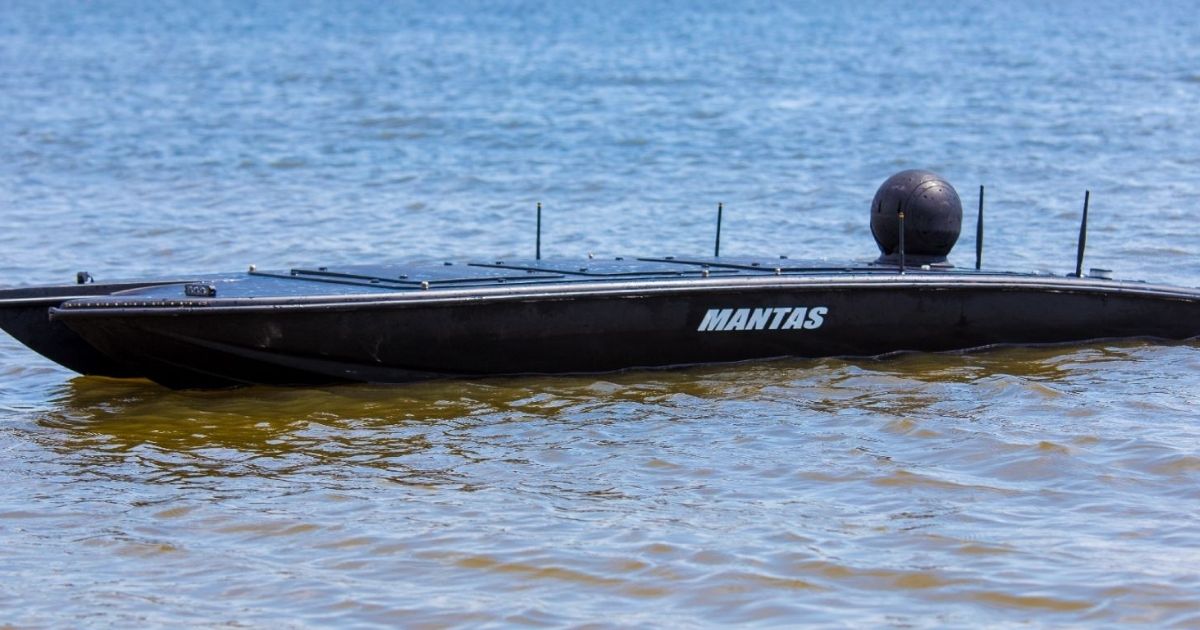By George Galdorisi
Few would argue with the fact that the ocean sustains the planet. And while there are many things that drive the changes in Earth’s climate that now poses an existential threat to humanity, the health of the ocean is the most important factor in ensuring a sustained, healthy climate.
There is mounting evidence that the world’s ocean is under increasing stress and that we must find a workable way to protect it. An essential element of doing so is making informed, data-driven decisions as to what steps to take to sustain the seventy percent of the planet covered by water.
Perspective
Data-driven decisions depend on collecting the right data, at the right places, at the right times. Where those with stewardship for various aspects of ocean sustainment cannot find an affordable way to collect this data, it will likely not be obtained. Unfortunately, if large gaps in data exist, this leads to an incomplete picture of the ocean’s health.
In the recent past, the failure to accurately assess temperature, current, wind, salinity, bathymetric, hydrographic, and other oceanic conditions could be forgiven, as there simply were not affordable ways to do so on a repeatable basis. Today there are, with unmanned maritime vehicles of various types, especially unmanned surface vessels, or USVs. While there have been some tentative attempts in the past to employ USVs to collect such data, there have been few comprehensive evaluations of such a capability – until now.
A United States Best-Practices Example
As a former U.S. naval officer with a graduate degree in oceanography, I have a lifelong interest in efforts to ensure the health of the ocean. I am aware that the U.S. National Oceanic and Atmospheric Administration (NOAA) and the U.S. Navy have formed a partnership to obtain and utilize unmanned maritime systems for a variety of missions, most notably to assess the health of littoral and oceanic waters.
These two major ocean stakeholders have recently signed an agreement to expand the development, acquisition, fielding and operations of unmanned maritime systems in the nation’s coastal waters as well as in world’s ocean waters. This will enable NOAA to leverage the Navy’s expertise, infrastructure and training to accelerate its science, service and stewardship mission.
The new arrangement corresponds with rapid expansion and innovation in the use of unmanned systems across the government, academia and private enterprise. The new pact formalizes the U.S. Commercial Engagement through Ocean Technology Act of 2018 that directs NOAA to coordinate with the U.S. Navy on a wide range of functions including research of emerging unmanned technologies.
Making Progress on Ocean Observation
This NOAA-U.S. Navy partnership is an important initiative that underscores the vital nature of robust data collection and why this is critical to ensuring the health and vitality of the world’s ocean. For both the U.S. Navy and NOAA, a major appeal of unmanned systems is to provide a persistent sensor picture to ascertain various aspects of the ocean’s health.
Given the importance of ocean observation as a critical ingredient to ensuring the long term and sustainable health of the ocean, unmanned systems have a strong appeal. Due to the prohibitive costs of using manned air or sea craft to conduct these observations, as well as the dangers of using these vessels in bad weather, in turbulent waters, or at night, the only effective solution may be to invest in affordable unmanned surface vehicles to conduct these observations.
In support of NOAA and U.S. Navy objectives for ocean observation, one U.S. corporation, Maritime Tactical Systems Inc. (MARTAC), was invited to demonstrate the use of commercial-off-the-shelf (COTS) unmanned surface vehicles to conduct a comprehensive environmental monitoring evaluation. This month-long endeavor was conducted under the auspices of the Naval Meteorology and Oceanography Command, or CNMOC. Under CNMOC’s stewardship, an Advanced Naval Training Exercise (ANTX) was conducted in the Gulf of Mexico, south of Gulfport, Mississippi.
Using Surface Vessels for Comprehensive Ocean Observation
Having a capable unmanned surface vehicle is only one part of conducting a comprehensive ocean observation exercise. Naval Meteorology and Oceanography Command scientists outfitted a MANTAS unmanned surface vehicle with a CNMOC Environmental Monitoring System. These systems and sensors were designed to provide a one-vehicle solution to environmental sensing that was, in the past, conducted by multiple platforms. Key to the success of this ANTX was the fact that the catamaran-hulled, compartmented MANTAS USV was outfitted with solar panels which enabled it to remain at sea for thirty continuous days.
CNMOC equipped the MANTAS with seven state-of-the-art sensors. This sensor data was communicated in real-time to the CNMOC control station. A second unmanned surface vehicle (another MANTAS), this one equipped with a different suite of sensors, was employed to conduct a second round of testing.
As testing continued with both USVs, CNMOC scientists and engineers provided vital feedback and suggested several enhancements to these vessels. This iterative process between developers, operators and engineers was inspired by past Office on Naval Research work in the area of user-centered design. Additionally, the ability to conduct surveys in higher sea states that had thwarted other unmanned surface vehicles in the past was one of the highlights of this months-long event.
In order for CNMOC officials to have real-time information on ocean conditions, four different communication systems were utilized: Line-of-Sight (LOS), 4GLTE, Silvus radios, and Iridium Short Burst Data. The use of multiple communication paths was important to the ability of CNMOC scientists and engineers to change the paths of the USVs as new search patterns were needed.
CNMOC conducted the testing described above, and it was so successful that the command employed a second unmanned surface vehicle (another MANTAS USV), this one equipped with a different suite of ocean monitoring systems and sensors. As testing continued with both USVs, CNMOC scientists and engineers provided vital feedback and suggested several enhancements to these vessels.
An important aspect of demonstrating the cost-effectiveness of employing commercial-off-the-shelf unmanned surface vehicles during this CNMOC ANTX was the ability of one operator to control both USVs simultaneously as they conducted surveys along specific paths, even with high sea states and currents of up to five knots.
Beyond the collection of vial ocean data, another area where unmanned surface vehicles can make an important contribution to monitoring ocean health is in response to real-world challenges. The testing described above occurred in the littorals of the Gulf of Mexico, an area that has more than its share of environmental challenges. Unmanned surface vehicles provide the ideal asset to evaluate the extent of damage as a first step in triaging the problem.
USVs can be used to measure freshwater runoff from the rivers which can kill a great deal of marine life, as well as identify green and red tides that hurt tourism in a local region. Using a solar-powered unmanned surface vehicle that can remain at sea monitoring the environment for up to thirty days at a time can alert communities to the extent of these green and red tides.
Instantiating Affordable Ocean Observation
The use of commercial-off-the-shelf unmanned surface vehicles successfully employed during this demonstration can be readily scaled-up in oceans, seas, bays, rivers and other waterways and can lead the way to enhanced data collection, transmission and evaluation of water conditions. The results will help sustain a healthier ocean.
As a major step forward in this effort, U.S. Navy officials encouraged the MANTAS USV manufacturer, MARTAC Inc., to scale-up the 12-foot MANTAS used for this effort and produce larger vehicles. This was accomplished last year, and a larger 38-foot Devil Ray USV was fielded. These larger vessels will be ideal USVs to conduct ocean observation due to their ability to carry considerably more sensors and remain at sea for longer periods.
During a recent webinar, NOAA’s Deputy Administrator indicated that two of the primary priorities this year for NOAA are ocean mapping and ocean health. Leveraging USVs to accomplish these priorities will go a long way to protecting the ocean. The vast array of technologies emerging with today’s unmanned maritime systems provides a tremendous opportunity to move forward with an effective and affordable ocean observation taxonomy.





